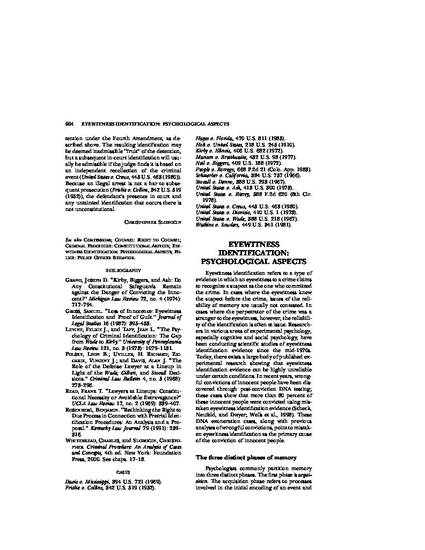
Eyewitness identification refers to a type of evidence in which an eyewitness to a crime claims to recognize a suspect as the one who committed the crime. In cases where the eyewitness knew the suspect before the crime, issues of the reliability of memory are usually not contested. In cases where the perpetrator of the crime was a stranger to the eyewitness, however, the reliability of the identification is often at issue. Researchers in various areas of experimental psychology, especially cognitive and social psychology, have been conducting scientific studies of eyewitness identification evidence since the mid-1970s. Today, there exists a large body of published experimental research showing that eyewitness identification evidence can be highly unreliable under certain conditions. In recent years, wrongful convictions of innocent people have been discovered through post-conviction DNA testing; these cases show that more than 80 percent of these innocent people were convicted using mistaken eyewitness identification evidence (Scheck, Neufeld, and Dwyer; Wells et al., 1998). These DNA exoneration cases, along with previous analyses of wrongful convictions, point to mistaken eyewitness identification as the primary cause of the conviction of innocent people.
Available at: http://works.bepress.com/gary_wells/9/

From Dressler. Encyclopedia of Crime & Justice, 2E. © 2002 Gale, a part of Cengage, Inc. Reproduced by permission. www.cengage.com/permissions